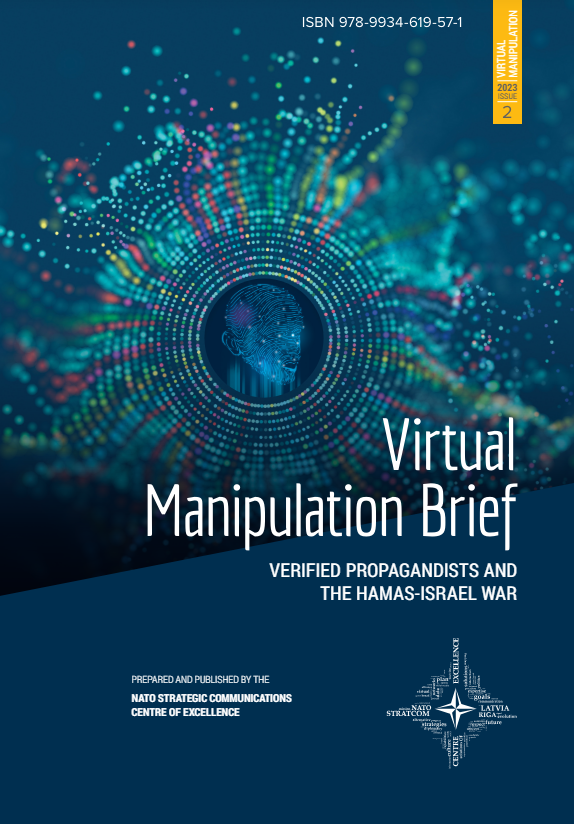Virtual Manipulation Brief - Verified Propagandists and the Hamas-Israel War
Virtual Manipulation Brief - Verified Propagandists and the Hamas-Israel War
Author(s): Rolf Fredheim
Subject(s): Politics, Media studies, Communication studies, Security and defense, ICT Information and Communications Technologies, Peace and Conflict Studies
Published by: NATO Strategic Communications Centre of Excellence
Keywords: media; communication; X; security; conflicts; Kremlin; VK; social media;
Summary/Abstract: In this issue of the Virtual Manipulation Brief, we identified 117 pro-Kremlin accounts—including notorious Z bloggers—who purchased verified status on X. This meant they could monetise fake news through X’s ad revenue-sharing feature. It also boosted their visibility – the newly verified propaganda accounts received more than twice as many views per post, on average. In October 2023, Kremlin propaganda shifted sharply in response to the HamasIsrael conflict. Pro-Kremlin accounts played a significant role in propagating disinformation, weaving narratives that linked the conflict to Ukraine. The Russian operation adopted a strongly anti-Israeli stance. It advanced a narrative that the US-backed Israel is responsible for killing babies in Gaza. It was transparently aimed at rehabilitating Russia’s image on the global stage and diverting attention from Russia’s activities in Ukraine. In the six months spanning May to October 2023, the conversation surrounding NATO in the Baltics and Poland centred on the NATO summit in Vilnius, the reaction to Wagner troops deploying near the Belarussian border, and a drone attack in Pskov. We examine VKontakte’s evolution into a multi-purpose platform, the Kremlin’s ‘everything app’. VK has expanded to incorporate features mimicking major Western platforms. It aligns closely with governmental interests and has become an essential tool in Russia’s digital infrastructure. Autumn 2023 brought significant new potential for AI-driven social media analysis. New multi-modal AI can handle complex audio, image, and text input combinations. This makes it possible to do better in-depth meme analysis and analyse videos. In 2024, we intend to apply these tools to analysing content on TikTok and YouTube. We conclude with an overview of the latest developments in social media manipulation, from the deluge of fake photos claiming to show scenes of suffering in Gaza to the emerging trend of artificial audio content targeting political opponents.
- E-ISBN-13: 978-9934-619-57-1
- Print-ISBN-13: 978-9934-619-57-1
- Page Count: 11
- Publication Year: 2023
- Language: English
- Sample-PDF
- eBook-PDF

